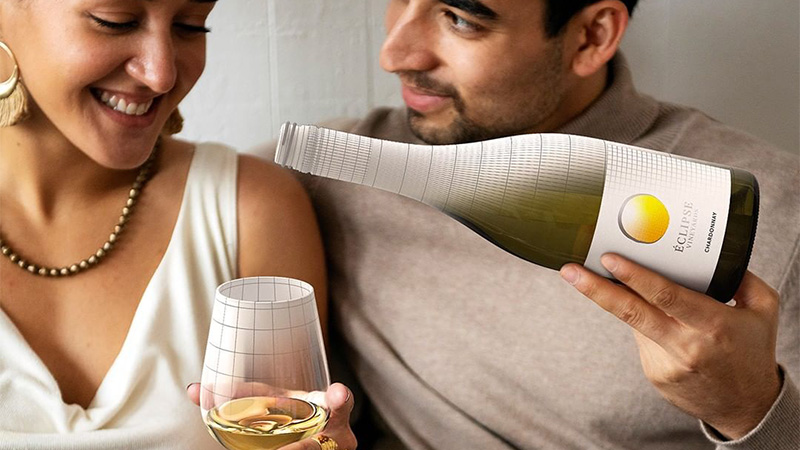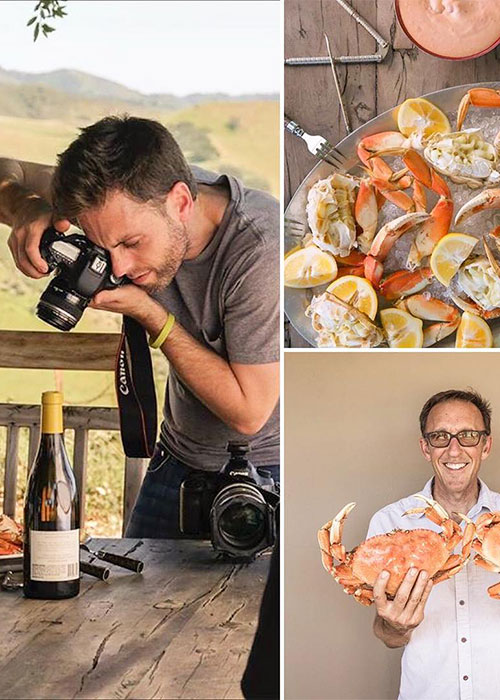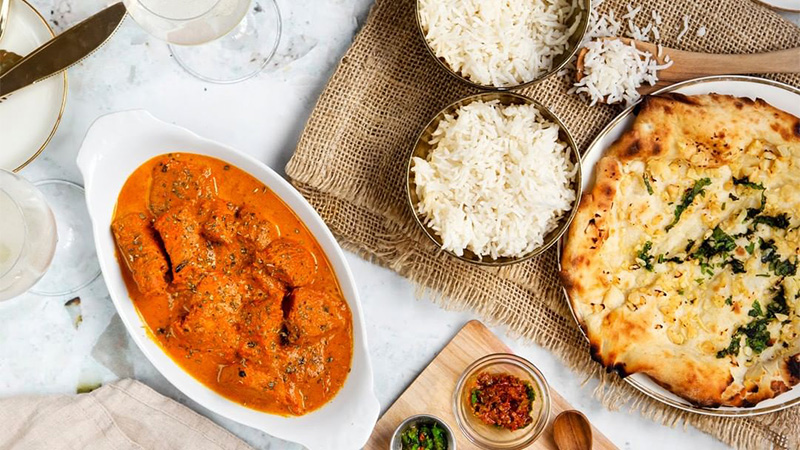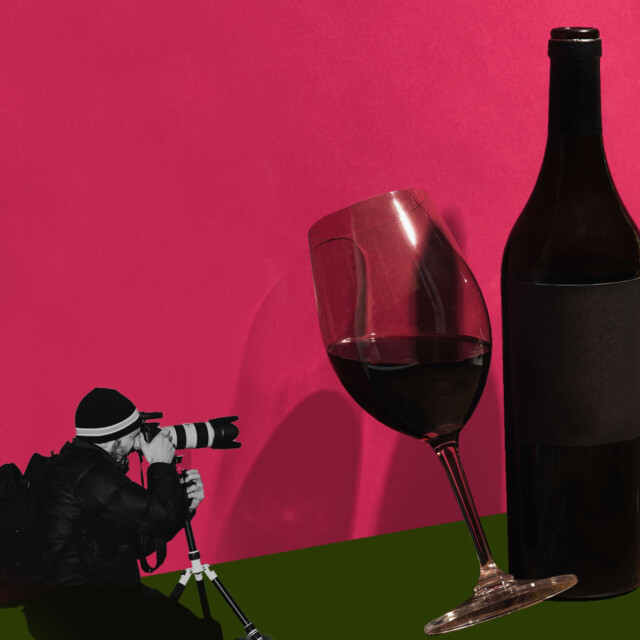Adults are playing cards on a patio. Someone’s brought pretzels and potato chips. It’s daytime, but a string of festive lights stretches across a yard of green, leafy trees. The friends have glowing expressions, with jaws dropped. Someone is placing down a winning hand. There are bottles of wine, one with a perfectly discernible label. This scene is from an advertisement for a value Pinot Grigio. It is an example of a modern day lifestyle image, and there is more here than meets the eye.
A lifestyle shot is an evocative visual message meant to connect a potential customer with a specific product. They either include models or insist, through props and settings, that a human experience is involved. Though these consequential types of images are evolving, there is still plenty of progress needed for them to speak to today’s scope of wine consumers. Luckily, talented professionals are heeding the call.
Diversifying Wine Advertising
Juliana Colangelo, vice president of California and new business at Colangelo & Partners, a beverage-oriented public relations firm, says that beer and spirit advertisements “do a better job of placing the product in the environment it’s going to be consumed.” To her, wine faces an “inward” issue. If one were to open a wine-focused, legacy print magazine, there would be more images of Eden-like vineyards at sunset than of wine drinking in action. When there are people, often, it’s not a diverse crowd.

That’s nothing new.
The lack of diversity in wine lifestyle imaging ranges from where the scenes take place, to who is depicted inside the images, to what those people are eating and doing.
“It was extremely rare to see a wine ad that featured people of color,” says Jean Kilbourne, a critic of alcohol advertising. She started her work in the 1970s. The subjects were typically older, “upper-class white people.”
Mainstream wine is struggling to shake this exclusive imagery. At the Pinot Grigio card game, the three friends are all of different racial backgrounds, but it’s one of the only examples of diversity in the wine magazine in which it appears.
“They are so redundant,” says graphic designer Laurie Millotte, talking about traditional images. Her Canadian company, Outshinery, helps beverage brands develop visual content while streamlining the process. Shoots include people of different races, genders, ages, and sexual orientations. Dragging images out of the vineyards into more exciting occasions is also key to her company’s output. “It’s such a fun product,” she says.
CGI Imagery or Classic Photography? It’s a Wine Brand’s Choice
To be efficient in the modern market, convenience is Outshinery’s pillar. It snaps the scene and inserts the bottle later. “Everything is self-serve,” Millotte says. Clients choose from a catalog of staged scenarios, and Millotte’s team adds a perfect computer-generated image of the client’s product. “We have well over 150 bottle shapes,” Millotte says. So far, Outshinery has rendered more than 16,000 bottles for its partners. Once a client picks a scene, it becomes off-limits to other companies in its area. Finished images can be expected within a few days.
In 2020, Gabriella Macari, of the North Fork’s Macari Vineyards, began using Outshinery and has only good things to say about her experience. “For small, family-owned wineries like us,” Macari says, “Laurie and her team … are a dream to work with.”
The nature of the process eliminates shipping concerns, and the turnaround is quick compared to conventional services. “Shine Credits” are purchased through subscriptions. The most popular enrollment is yearlong and costs $2,159.90. With it, clients receive 25 credits. Lifestyle images cost one to three credits.

Some growing businesses, like California’s Bottle Branding, owned by Jeremy and Michelle Ball, use a more classic approach to lifestyle shots. A bottle is on location when the photo is captured. Ball says making an image “too processed or posed” can eliminate the feeling of authenticity. “Someone may think they need X, Y, and Z to accomplish a lifestyle shot,” he says, but “sometimes it’s just seeing the sunset glisten over wine glasses.”
Bally says a customer might sign on with $600 and “get more than a handful of high-quality shots.” It all depends on the length and size of the shoot. A couple of days can cost thousands.
Online Lifestyle Images Are Full of Food
Colangelo & Partners has an expanding creative team and is seeing a considerable bump in requests for digital images and social media content. In fact, many new clients are signing up only for these types of services. In a four- year period, the company has witnessed a shift from in-person, event-based marketing toward strong online branding campaigns as clients attempt to retain customers, and approach new ones, on virtual platforms.
Colangelo, Ball, and Millotte all see an opportunity with food. Wine is especially bound to what is eaten with it — and in the real world, consumers enjoy wine with more than cheese boards. Wine lifestyle images are now promoting meals inspired by Chinese, Japanese, Thai, Mexican, and Indian cuisines. Even the pretzels and potato chips in the Pinot Grigio lifestyle shot communicate with an audience that hasn’t been traditionally tapped by wine marketing.
Kilolo Strobert, an owner of the retail store Fermented Grapes, in New York City, thinks lifestyle shots incorporating specific meals might work well when delivered to the communities in which they’re enjoyed but could fall flat outside of them. “In order to get someone to think about your messaging,” she says, “you need to give them the tools to do so.” Whether it’s curry in an Indian restaurant or chips and pretzels on a patio, to Strobert, these images need a telling atmosphere — even words — to resonate with the general wine consumer.

But today, companies can target particular groups with relative ease, which is a significant reason why the online wine lifestyle landscape is far more diverse than in print. A shot promoting Prosecco on Instagram has two fizzy glasses placed next to pieces of nigiri and sushi on a dark wooden table, and includes specific hashtags to bring the image to the right consumers: #sushi, #sushilovers, #sushiroll. A sushi lover scrolling through posts might catch a glimpse of the pairing and try Prosecco. Likewise, someone who already enjoys this pairing might appreciate being acknowledged.
Understand Lifestyle Images for What They Are: Stories
“What’s really being sold here, in addition to the alcohol,” says Kilbourne, is “a particular life.” For decades, Kilbourne has educated consumers on the subliminal techniques in alcohol advertisements. In her 1982 film, “Calling the Shots: The Advertising of Alcohol,” she aimed to “bring those unconscious messages out in the open.” By understanding how certain images quietly promote binging alcohol, a viewer is better prepared to protect themselves. “It gives the power back to us,” she says in the film. Forty years later, she says it’s just as important to “pay conscious attention.”
“It’s very tricky because we’re so surrounded by these images,” says Kilbourne.
More consumers will recognize themselves in wine media as representation in lifestyle images develops further. Technology is making their production more efficient. Social media is a frontier for brands to broadcast to all wine drinkers, and they are innovating ways to do it precisely. In a lifestyle image, a fun card game with Pinot Grigio isn’t just a fun card game with Pinot Grigio. It’s a message. What an image depicts, says Ball, “depends on what story we’re trying to tell.” Hopefully, we’re striving to tell them all.
This story is a part of VP Pro, our free platform and newsletter for drinks industry professionals, covering wine, beer, liquor, and beyond. Sign up for VP Pro now!
